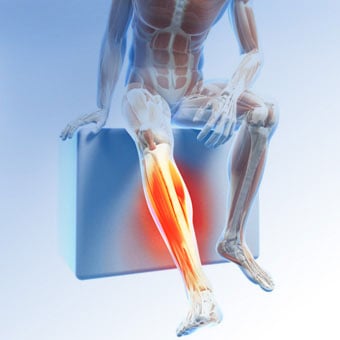
Restless Leg Syndrome (RLS) is an autonomic neuropathy condition that involves abnormal sensations in the leg. One or both legs can be affected by the syndrome. For some sufferers, the symptoms are felt at different parts of their body. RLS can be caused by neurological damage in the brain, or by chemical imbalances in the nervous system.
RLS is not a central nervous system disease. The pain and other symptoms of RLS originate from the nervous system in the central nervous system. It can occur in a person who is suffering from a condition called Guillain Barre Syndrome, a disorder of the nerves controlling the upper part of the esophagus. The nerves controlling the legs are located on the sides of the spine near the sacral and thoracic vertebrae. In the case of GBS, the nerves controlling the lower back and stomach are located on the right side of the spine.
GBS has no known cure, but it can be controlled with medication. RLS is usually treated with certain medications and therapy that includes exercise. If the nerves in the legs and arms are damaged, people will have episodes of muscle spasms, numbness, tingling, and weakness. Other symptoms of RLS can include fatigue, depression, and memory problems.
Nerve damage can be caused by a variety of situations and activities. This type of injury can range from simple sprains and strains to fractures. People can injure nerves from falls, sports, traffic accidents, flying, falls, and repetitive movements.
Nerve injuries can also occur due to muscle tension during exercise. Muscles that are tense or stretched for a long time can damage the nerves in the muscles. Tissues and muscles can swell and become inflamed, which leads to increased blood flow to the damaged area. Overuse of muscles can cause tissue damage. This can lead to muscle swelling and tissue loss. Muscle cramps and stiffness are common symptoms of muscle injury.
Nerve damage can occur due to trauma to the affected area. These injuries are commonly caused by car accidents, falls, sports and car accidents. They can also result from human exposure to chemicals such as pesticides, herbicides, fertilizers, and even household cleaning products. Trauma can cause infection or inflammation, which can lead to scarring.

Sometimes, a nerve injury can occur when there is an injury to the nerve that is not related to a particular source of injury
When this occurs, the damaged nerve signals an abnormality to the brain, causing the symptoms described above. It may occur due to a condition known as Guillain Barre Syndrome. RLS is the name given to a condition that causes repeated muscle spasms and contractions of the muscles, often accompanied by numbness, tingling, and weakness.
Nerve damage is usually temporary and will subside as the body heals, but if the damage is severe, it can last a lifetime. RLS is treatable with drugs, medication, and/or surgery. A doctor may use an MRI, CT scan, and X-rays to diagnose nerve damage.
Some people are more at risk of developing nerve damage than others. If a nerve is damaged, it can cause symptoms such as: leg pain, numbness, weakness, difficulty walking, vomiting, and diarrhea. Nerve damage can also cause problems with breathing, swallowing, bladder control, and bowel movements. When this occurs, the person will need to seek medical care as soon as possible.
As previously stated, people who have an injury to a nerve are more at risk for getting RLS than people who do not have this type of injury. In addition, if a nerve is damaged due to sports or motor vehicle accidents, they are more likely to develop this disorder. This is due to the nature of how nerve fibers from this type of tissue travel through the body. If a nerve becomes pinched, it is very hard to travel, resulting in the sensation of numbness or tingling.
People who do not receive any type of therapy following a nerve injury are more likely to develop this condition. Therapy can help to restore function and ease the pain and suffering of patients. This is one of the most effective treatments for RLS.
There are many different treatment options available for treating nerve injuries and RLS. Depending on the source of the injury, people with this disorder may be able to benefit from physical therapies such as acupuncture, massage, physical therapy, electrical stimulation, and medications.